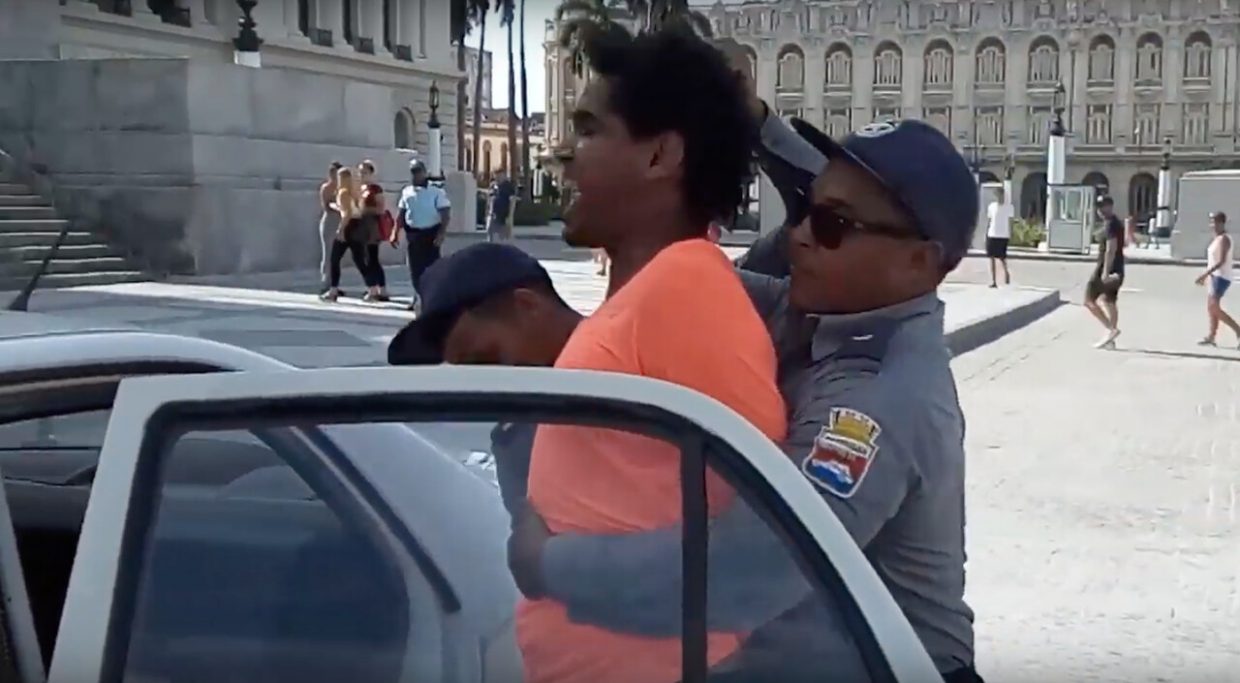The Loss of Fear as Civic Performance
Antiwar activists carve “no to war” in frozen rivers, spray-paint slogans of peace in the snow. They scrawl on banknotes, putting their opposition into circulation. Despite the looming threat of 15-year prison sentences, artists and activists in Russia continue to protest Putin’s ongoing invasion of Ukraine. Coordinated acts of crying are staged on public transportation. Women dressed as widows all in black pose with white roses in front of Soviet memorial sites. Feminists scatter tulips twined with blue-and-yellow ribbons, leaving notes for the Ukrainian dead.
In contexts of state repression, such performative gestures render time and space malleable. These actions, often organized by means of encrypted messages sent over Signal or Telegram, recode physical and psychic landscapes with words and sounds—if not of hope, then at least of dissent.
These daring, dissident acts remind me of the Cuban artivists—currently imprisoned or exiled—unable to register their protest against Putin’s war. While Cuban artists such as Tania Bruguera have spoken out against Cuba’s tacit support for what they term Russia’s imperialist invasion, they have mainly done so from abroad. Bruguera agreed to leave the island this past fall in exchange for the release of political prisoners, several of them artists from the 27N movement discussed in my article “When Doves Cry: Tania Bruguera’s Untimely Practice.”

The spontaneous marches in Cuba during the summer of 2021 represent the pinnacle of unregulated protest on the island in more than 60 years. The 11 July demonstrations were driven by an economic crisis made unbearable by Covid lockdowns and shortages of food and medicine worsened by the US embargo. Luis Manuel Otero Alcántara, the artist shown in the article being thrown into a police car (and pictured above), is among hundreds of protestors (many of them minors) who remain in prison for exercising their right to free speech.
In a video posted to his Facebook wall, shortly before he was arrested on his way to the Malecón, Havana’s famed seawall, Otero Alcántara declares that all of Cuba was on the streets and that all of the national and international civil organizations, including his own San Isidro Movement, were calling for Cubans to go outside and join the protests. Democracy is what we want, he says.
Apprehended shortly thereafter, Otero Alcántara is now serving a seven-year sentence in a maximum-security prison on charges of public disorder, contempt, and insult to the symbols of the homeland. Due to the toll of numerous hunger strikes, poor conditions in the prison, and the lack of proper medical attention, the artist’s physical health has deteriorated over these months. Friends say he has lost vision in one eye.
Though Otero Alcántara never made it to the grand convergence that his performative call conjured, his repetition of “cuesta lo que me cuesta”—his insistence that he would join those chanting “Patria y Vida” in the streets, whatever the cost to his person—was a message resoundingly heard by Cubans everywhere. Today it is the dispatch of Ukrainians fighting for their own freedom.
Candice Amich’s article “When Doves Cry: Tania Bruguera’s Untimely Practice” is published in the new issue of TDR (66/2) and is free to access until the end of July 2022.
Image caption: Police preemptively arrest artist Luis Manuel Otero Alcántara on the steps on the Capitolio Nacional, 10 July 2018. (Artistas Cubanxs en Contra del Decreto 349; screenshot courtesy of Candice Amich).





